In the sweet afterglow of last month’s historic rapprochement between the United States and Cuba, much has been made of the pivotal roles played by Pope Francis, the Canadian government, New York Times editorialists, various American politicians and their aides, even “sperm diplomacy.”
All that is true, of course, but there are other narratives in this larger tale too, perhaps none more compelling than the against-all-odds, never-say-never global campaign to “free the Cuban Five.” For a decade and a half, small, dedicated, disparate, sometimes competing groups of political activists in the United States and around the world have demonstrated, lobbied, lettered, conferenced, cajoled and hectored in a seemingly quixotic quest to win the release of five imprisoned Cuban men.
The Five were members of a Cuban intelligence network dispatched to South Florida in the 1990s to infiltrate and report back to Havana on Miami exile groups that were plotting — and carrying out — deadly terrorist attacks against their homeland. In June 1998, Cuban State Security shared the fruits of its intelligence on some of those plots — including one to blow up an airplane filled with beach-bound tourists — with American authorities. Three months later, the FBI swooped in and arrested… not the terrorists but the Cuban agents. Charged in hostile-to-all-things-Castro Miami and tried against the backdrop of an emotional child custody tug-of-war between Havana and Miami over the fate of rescued rafter child Elian Gonzàlez, the Five were summarily convicted and sentenced to unconscionably long terms in American prisons. The network’s leader, Gerardo Hernandez, received a double-life-plus-15-year sentence.
For the Cuban government, winning the release of the three members of the Five still in American prisons — each of them a certifiable, first-name-basis hero at home — was the sine qua non for everything else that happened Dec. 17: freeing American USAID contractor Alan Gross, handing over a Cuban national convicted of spying for the United States, agreeing to re-establish diplomatic relations with Washington and all the possibilities and perils that will inevitably flow from that…
None of 2015’s hopeful rest might be possible, however, if not for the efforts of that eclectic collection of progressive political activists, Hollywood celebrities and ordinary folk who refused to allow the story of the Five and the injustice against them to be forgotten.
The campaign to free the Five didn’t begin in earnest until after their convictions in 2001, in part because the Cuban government initially refused to claim them as their own. (That’s not surprising; the U.S. government only publicly acknowledged its own agent inside Cuban State Security when he was finally released from Cuban prison last month, nearly 20 years after Cuban authorities arrested him.)
By the time the trial of the Five began in late 2000, however, Havana had not only acknowledged them as Cuban intelligence agents but also staked out its key leg and moral argument: that it had had no choice but to deploy its agents to Florida because U.S. law enforcement agencies allowed anti-Cuba terrorists to operate freely — and illegally — on American soil.
Alicia Jrapko, an Oakland, California, political activist, first wrote to Gerardo Hernandez in late 2000 or early 2001. He wrote back, beginning a deep political partnership (he sometimes half-jokingly referred to her as his “secretary”) and personal friendship that continues to this day.
Jrapko’s partner and fellow progressive, photographer Bill Hackwell — they met during a Pastors for Peace Caravan to Cuba in 1995 — was among the few Americans at the sentencing of the Five in Miami in December 2001. “That’s when we first met the mothers of the Five,” Hackwell recalls. “It was remarkable just how strong they were.”
The first “Free the Cuban Five” banner was unfurled at a May 2002 anti-war rally in San Francisco. Initially, Hackwell admits today, working on the case was simply “solidarity work, a project. It was just what we do. But eventually,” he adds, “it became something else, a way of life. It ultimately defined who we were.”
In 2006, Hackwell, Jrapko and some others split from the original National Committee to Free the Cuban Five — which had been formed by Gloria La Riva, a prominent California political activist — to form the International Committee for the Freedom of the Cuban Five. The split was partly about activist politics, partly about personalities, but, in the end, the rift created two groups working determinedly, if sometimes uneasily, in parallel for the same goal.
La Riva’s group continued to stage its own events and even helped unearth evidence the U.S. government had paid thousands of dollars to “journalists” who’d written incendiary stories about Cuba and the case of the Five in the Miami media before and during their trial. Such revelations raised new and troubling questions about the fairness of the original trials — which had also been questioned by Amnesty International and the United Nations Working Group on Arbitrary Detention — and laid the groundwork for last-ditch legal appeals that were still working their way through the courts at the time of last month’s release of the remaining members of the Five.
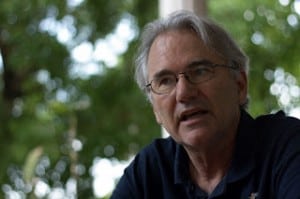
Jrapko’s and Hackwell’s cozy two-bedroom home in Oakland became the International Committee’s 24-hour-a-day world headquarters. Their day jobs — Hackwell and Jrapko both worked for a small Bay-area non-profit — took a distant second place to their Cuba work. “Our boss was a progressive and very accommodating,” Hackwell says. “We’ve always walked the edge on our finances, but we cobbled stuff together to make it work.”
They made slow, stuttering progress. They connected with Gayle McLaughlin, the mayor of Richmond, California, and that launched a free-the-Five letter writing campaign that eventually won the signatures of 13 American mayors. With the help of Tony Woodley, a British union leader involved in the growing international Cuban Five solidarity campaign, they made tentative contacts with progressive elements in the American labour movement. And they joined forces with Graciela Ramirez, an Argentine-born human rights activist based in Cuba, who became International Co-Chair of their committee.
The National and International committees weren’t the only groups involved. Cuba Solidarity organizations in many American cities had already formed their own local Free the Five sub-committees. Similar groups sprouted in Latin America and Europe. Vancouver’s Committee to Free the Five, for example, was especially active, staging more than 100 monthly, fifth-of-every-month protests in front of the U.S. consulate to keep up the pressure.
In 2012, the Toronto-based Friends of the Cuban Five committee, made up of members of local solidarity groups, individuals and union activists, staged “Breaking the Silence, Justice for the Five, People’s Tribunal and Assembly,” a two-day international gathering, to discuss the case.
In March 2014, a European-based international coalition attracted 300 people from 27 countries to the Grand Hall of the Law Society in London for an “International Commission of Inquiry into the Case of the Cuban Five,” which was presided over by the former Chief Justice of India, a former judge of the French Supreme Court, and a former Justice of the Constitutional Court of South Africa.
By then, one initially seemingly unrelated but ultimately critical turning point in the campaign to free the Five had already occurred. In 2011 when Hackwell, Jrapko and a patchwork of allies across the country orchestrated a successful three-city, three-week U.S. tour for La Colmenita, a popular Cuban children’s theatre troupe. Besides raising American awareness of Cuban theatre and culture, including the iconic place of the Five in its national psyche (La Colmenita’s repertoire includes a popular play about the Five), the success of the tour convinced Jrapko and the others they had a first-rate organizing team in place that could stage events on a national scale, even international scale.
That led directly to the first “Five Days for the Five” event in Washington in April 2012, a modestly ambitious week of speeches, panels, film screenings and lobbying.
The event was important for a number of reasons. Besides already well known Five supporters like Danny Glover, the actor and activist, and Saul Landau, the late filmmaker whose documentary about the Five was screened during the week, Five Days brought together for the first time under the Free-the-Five banner such well-known and respected progressive public figures such as Dolores Huerta, the co-founder of the United Farm Workers’ Union, Cindy Sheenan, the anti-war activist, and James Early, the Director of Cultural Studies and Communication at the Smithsonian Institution. The event also attracted prominent voices from the broader Cuba debate like Wayne Smith, the former head of the U.S. Interest Section in Havana, and Mavis Anderson, a Senior Associate at the Latin American Working Group.
But perhaps the most significant impact from that first Five Days was the recognition of the importance of lobbying on Capitol Hill. While chatting up Washington lawmakers was well outside the political comfort zone for most of the International Committee’s activists, they also understood that freeing the Five would almost certainly come down to a political decision — a presidential pardon — and that could only happen if there was some political support for it. The initial results, however, were hardly encouraging. Few, mostly low-level Congressional staffers agreed to meet with them. Those who did knew little, often nothing at all, about the case. The Cuban Who? When they learned the details, the aides were occasionally hostile, at best, indifferent.
Undeterred, the Committee organized a second Five Days in September 2013, then a third last June.
The third “annual” 5 Days for the Cuban 5 — highlighted this time by an ambitious two-day conference entitled “A New Era in USA-Cuba Relations” — featured an eclectic group of international speakers, including Ignacio Ramonet, the former editor-in-Chief of Le Monde Diplomatique; Fernando Morais, the best-selling Brazilian author; Rev. Joan Brown Campbell, the former General Secretary of the National Council of Churches of Christ in the U.S.; Lawrence Wilkerson, a retired U.S. Army Colonel and former Chief of Staff to Colin Powell; Gilbert Brownstone, an art curator and Director of the Brownstone Foundation; Tom Hayden, a former California State Senator and longtime civil rights activist; and Martin Garbus, the prominent American first amendment lawyer who represented Gerardo Hernandez in his last-ditch legal appeal.
Attendees also participated in a 500-strong march from the White House to the Justice Department, and attended a concert dedicated to the Five featuring the popular political hip hop group, Dead Prez.
Just as important, the event brought together representatives from 31 countries in Washington. “That was important,” explains Jrapko. “We needed them to come to Washington because that was where the real struggle was.”
Among the foreign participants this time were 11 international parliamentarians who helped lobby their fellow legislators in Washington. The number — and tone — of the meetings with American politicians was different too. The International Committee managed to arrange more than 60 individual meetings — three times as many as in 2012 — and many of them were face to face sessions with elected officials themselves. Instead of asking who the Five were and what the fuss was about, some legislators were now asking what they could do to help — or reporting on what they’d already done. The Committee even managed to score two meetings with senior Cuba Desk officials in the State Department who previously hadn’t even responded to their requests.
It didn’t hurt that local Cuba support groups in a number of American cities as well as more than a dozen countries staged simultaneous events to mark the third Five Days in Washington. More than 230 Spanish legislators even signed a letter to President Barak Obama that week, requesting he release the Five.
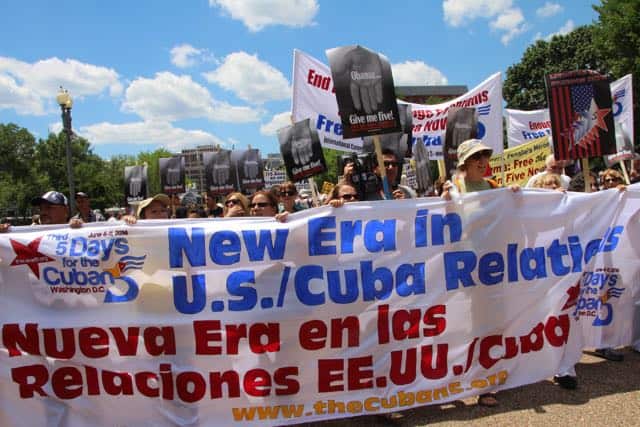
Washington March, June 2014.
Plans were already well underway for an even more impressive fourth Five Days for the Five scheduled for Washington in September 2015 — the International Committee had lined up 1,500 public endorsers for the event, and in early December signed a lease on a D.C. duplex they planned to use as an organizing base for the next year — when Washington and Havana stunned them, and the world, by announcing the deal that freed the three remaining members of the Five last month.
If their efforts — and those of solidarity activists around the world — are now largely ignored by the American press, the Cubans did not forget. In October, the Cuban Institute of Friendship with the Peoples presented Jrapko and Hackwell with Cuba’s Friendship Medal, in part for their individual “maximum commitment to Cuba, and put their professional and family life second to this constant struggle,” and in part because “Alicia and Bill form part of this selfless friendship” that helped finally free all of the Cuban Five.
A version of this story also appears in Counterpunch.
***
Not all of those who’ve been part of the struggle to free the Cuban Five have been prominent activists, or even members of organized groups. Meet a few of them here.
**
Updates: The story has been updated to reflect the fact Alicia Jrapko was not in Miami for the sentencing of the Five, and to correctly identify the group that organized the Toronto People's Tribunal in 2012.
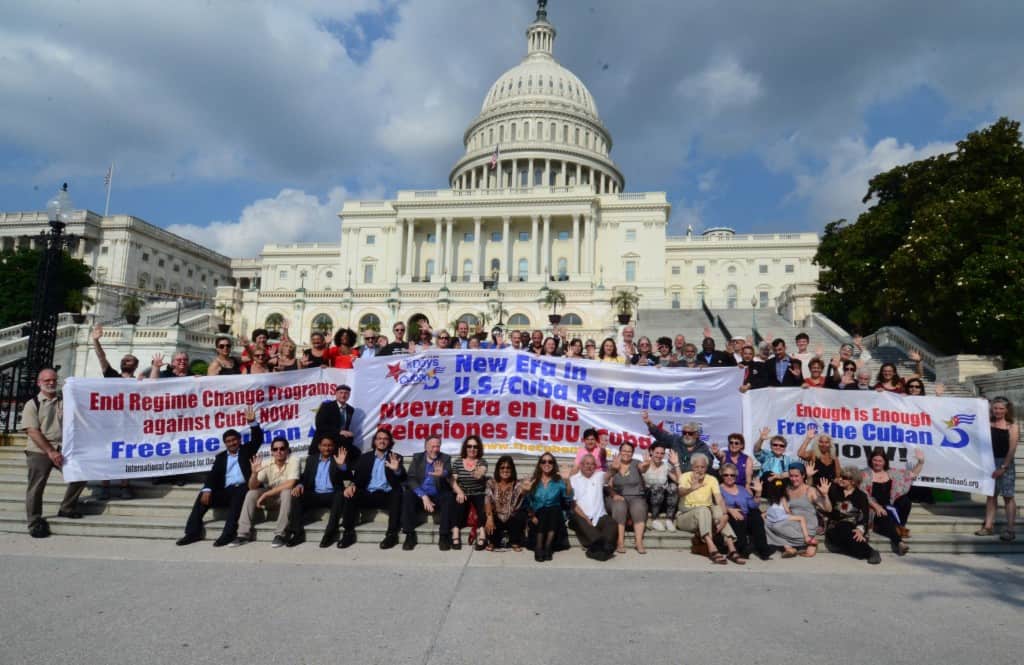
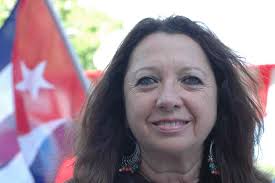
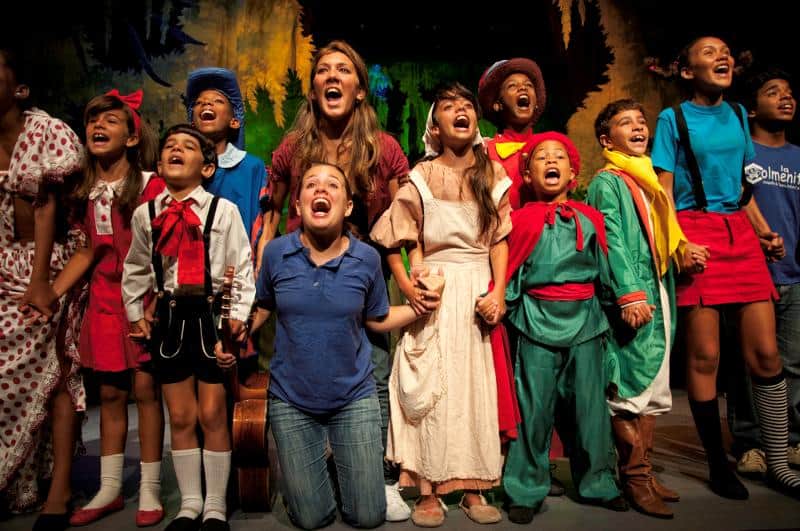







 STEPHEN KIMBER, a Professor of Journalism at the University of King's College in Halifax and co-founder of its MFA in Creative Nonfiction Program, is an award-winning writer, editor and broadcaster. He is the author of two novels and eight non-fiction books. Buy his books
STEPHEN KIMBER, a Professor of Journalism at the University of King's College in Halifax and co-founder of its MFA in Creative Nonfiction Program, is an award-winning writer, editor and broadcaster. He is the author of two novels and eight non-fiction books. Buy his books